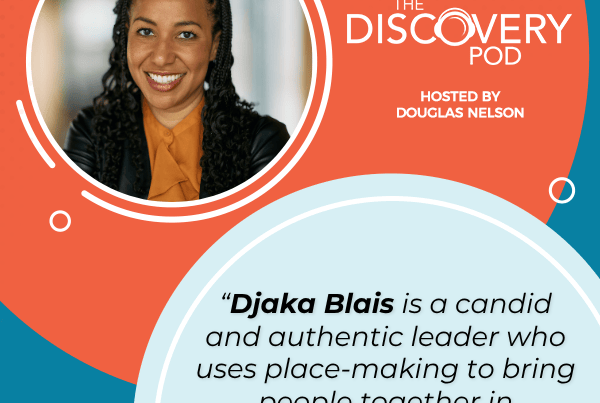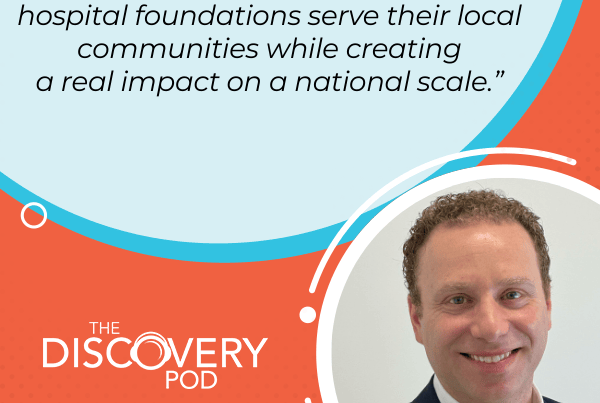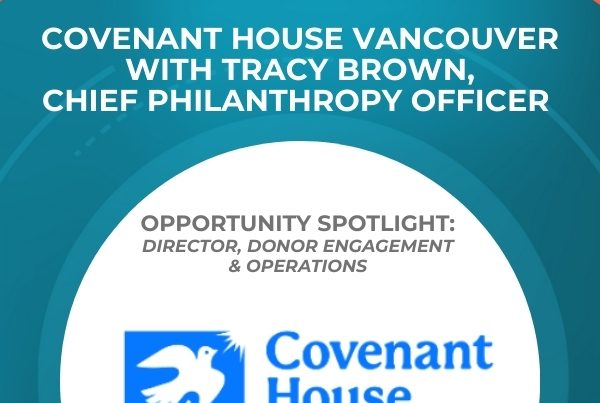There are communities that don’t have safe drinking water, which leads to adverse health outcomes, and these challenges have been associated with colonialism and health outcomes associated with poverty. The Children’s Hospital Foundation of Manitoba is dedicated to ensuring that every child treated at HSC Winnipeg Children’s Hospital has the best care and experience possible. The CEO of Children’s Hospital Foundation, Stefano Grande, shares the great successes of their campaign, as well as what was involved in moving the organization from pre-campaign to the final stages of a very successful campaign. Through their $75 million campaign, the Foundation was able serve the children and families with negative health outcomes attached to poverty and reach those communities who have limited access to healthcare. Listen to this inspiring episode as Stefano shares his insights, wisdom, and learnings throughout the conversation.
—
Listen to the podcast here
Children’s Hospital Foundation Of Manitoba
This episode is a masterclass in connecting the values of your organization, the generosity of your donors, and the total value of your campaign. We’re joined by Stefano Grande. He’s the CEO of the Children’s Hospital Foundation of Manitoba. He shares the journey his organization and his team has taken to build the largest healthcare campaign in Manitoba’s history and the success they’ve had in raising money for an important institution within that province. Readers will learn about values-based leadership, and understand what it takes to connect those donors to the mission of his organization and the bumps that experienced along the way. Please enjoy my conversation with Stefano Grande.
—
Stefano Grande, welcome to the show. It’s great to have you on.
Thank you, Douglas.
This season, we’re asking all of our guests as a way to kickstart the conversation about giving and the importance of philanthropy in our sector. Growing up, what was your first memory of giving donations and working with charitable organizations?
Giving is probably part of my fabric because of the thoughts of my parents who are from the Italian culture. I remember very early on in my life, my parents were volunteering their time and contributing, support to our Italian Pavilion, the Italian Cultural Center. It’s something important to ensure that the Italian culture is something that we share in our city through Folklorama. The number of hours and time volunteering and ensuring that the Italian Pavilion is a success was the beginning of my first introduction to giving my time and resources to my community to make things better.
It carried through to a career of service. You started your career in urban planning and economic development before transitioning to the social profit sector. Can you walk our readers through the transition from your old job to becoming CEO of the Children’s Hospital Foundation of Manitoba? What were you thinking about as you made that transition?
When you think about your career, you never know where it’s going to go. I started my career knowing that the not-for-profit sector was something that I was very much interested in. I had some wonderful experiences working for Winnipeg Housing, which is an agency that provides social and affordable housing for people in our community.
Getting anything accomplished in our city in Winnipeg is all about collaborating, working together and bringing dollars together, whether it’s from sponsors, donors, banks or other sources to create things that are important to our community like affordable housing. From there, moving on, I work on something very dear to my heart and the heart of Manitobans, which is having a very strong downtown. You can’t have a healthy city without a healthy downtown.
We talked about what’s important to our community, retail development and growth, places for people to hang out and celebrate in our downtown and dealing with some difficult issues like ending homelessness. One of the most important things I did at the downtown business is raising over $1 million to help homeless people find housing and employment to improve safety. Making that connection between improving the social issues and safety for Winnipeggers through social programs like employment and housing is critical to our city.
Years of serving our community, we build community in areas where Winnipeggers and Manitobans feel that we need to excel as a community, whether it’s downtown, affordable housing, ending homelessness or providing employment to youth, which is a thread throughout my career as a means of empowering our disadvantage in our community.
When this job came calling, I thought, “I’m not a fundraiser. What do I know about improving healthcare and hospital and research?” Ultimately, at the end of the day, ensuring the health of our kids is also another important platform for Manitobans, ensuring that we have the best doctors, nurses, technology and brick and mortar available here at our hospital and ensuring that our research is targeted and prime with dollars to facilitate finding those cures to those diseases.
I felt this was a calling, bringing all of these experiences and everything that I’ve learned being a generalist and trying to bring the community around the table to improve the health of children. I thought, “I might be an urban planner but I’ve evolved into more of a generalist in terms of building community.” I decided to make this leap and change my career. I have to tell you that it’s been extremely rewarding.
Stefano, do you recall what those first days feel like as you put your hand on the door, walk into the foundation and said, “This is different?” What did that feel like? What were you thinking as you made that transition?
It was fearful. I had fear of not knowing what the job is, how I go about doing it, understanding the healthcare sector, learning from the staff and learning a whole new vocabulary around healthcare and this whole new sector of players and different stakeholders but then I realized the basics, which is to make sure you have a great strong team. Listen and learn. Be open. Be driven by the people that you serve, which are the families, the kids and the doctors.
My instincts and skills took over, which is to build a table with all these people. Listen to where the vision is. Build out the tactical plan and rely on the community to drive things forward. It’s been an incredible 4 or 5-year journey for myself and my organization. I’m so proud of what we’ve accomplished over the last few years.
Listen to where the vision is, build a tactical plan, and rely on the community to drive things forward. Share on XIt is impressive to see where the organization was and certainly where you are. In my experience with working with people who’ve been involved in business improvement associations or economic development, they’re good at bringing people together, building big ideas and then trying to take that to several stakeholders to convince them to be a part of it. You’ve done the same thing at the hospital. You’re in the midst of the Better Futures campaign. I’m hoping you can tell us a little bit about not only its great successes of it but what was involved in moving the organization from pre-campaign to the final stages of a very successful campaign.
If someone would have said, “Stefano, you’re going to be launching the biggest healthcare campaign in the province since the history of the foundation. Are you willing to take this on,” I would say, “I don’t know. I never got a campaign before.” Ultimately, the pieces of the puzzle were there starting with great leadership from the boards, and this history that goes back to 1970 as a foundation raising millions of dollars and having a clear, articulate vision that aligns with health leaders in our province, at our children’s hospital and our research institute. Even the thoughts and vision from our families and donors, packaging that in a way that you add it all up and assign a 5-year value to it, which is $75 million.
Presenting that vision to a legion of donors that have been part of our history and success. Introducing our vision and strategy to hundreds of new donors. It resonated. The strength of the $75 million campaign comes from the community, philanthropy and donors who have said, “We want to help build a new cardiac center, catheterization lab and new fluoroscopy lab. We need to improve technology and equipment for our kids.”
Some people who are part of our philanthropic circle have children. They want a better hospital and research that finds those cures to the elements of their children. Other donors can understand and experience the pain of loss so they want to create something significant and create that change for our community and other kids. We have other donors that are so grateful that their kids and grandkids are healthy. They want to make sure that that continues. It’s a powerful sense of community that comes together around this platform of ensuring we have the best possible healthcare for our kids.
You said you weren’t a fundraiser before you took this job. I’m curious. What did it feel like when you started using that number, $75 million, in polite conversation with people?
Before we went public, we wanted to speak to a few donors who have been with us for years. We had one donor that said, “$75 million, we need to do more.” That was a very interesting conversation. This was a donor that was very closely connected to our cause, to research and to the hospital. She knew the needs and the gap that we need to respond to with or without government. We had other donors that would say, “That’s pretty bold. Come talk to me in a few years and let me know.”
You fast forward and we’re coming into the last year and a half of our campaign. We’re over $55 million over the $75 million goal and on target. It’s because of the generosity of our community that has multiplied. What I have found very inspiring is it happened during a point in time in our community globally where it has unprecedented issues and challenges related to COVID.
Have your conversations with donors changed over the course of the pandemic where you were talking about building a better, brighter and more accessible hospital prior to the pandemic hits? How does that change the conversations? What are you hearing?
The conversation became more important and connected to the challenges that we saw in our hospital because of COVID. It picked out some of those challenges, put a spotlight on them and said, “We know we need to improve mental health in the programs and the telehealth pieces. We need to do it now.” Kids were not coming to the hospital because of the COVID challenges and the mental health crisis was upon us. It’s still with us.
What COVID has done is put an extra spotlight on the challenges that we’ve seen our hospital and research institute deal with over the last decade plus. It shined a light on our biggest strength in what we’ve seen during COVID, which is the resiliency of our doctors, nurses, staff and our researchers that move this machine forward. Despite the COVID challenges, they continue to serve our community. Our hospital staff is exhausted but we continue moving forward on these key pieces that are instrumental to building a better future for the kids in our province.
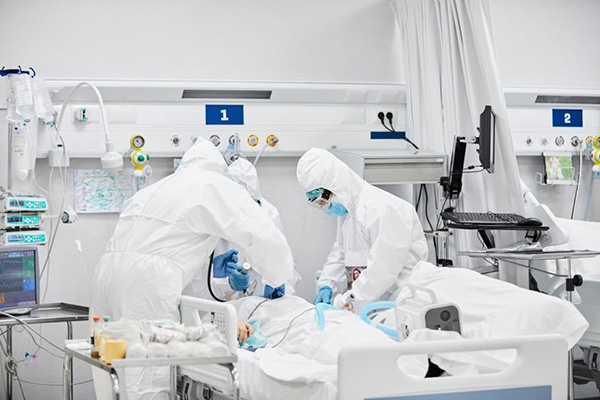
Children’s Hospital Foundation: COVID shines a light on our biggest strength: the resilience of our doctors and nurses, the staff that moves this machine forward, and our researchers, and how, despite the COVID challenges, they continue to serve our community.
One of the things that always inspires me about physicians and nurses that are working particularly in children’s hospitals is the understanding that there is nowhere else for these kids to go. This is it. We’ve got to understand what’s going on and support these kids. I’m sure that probably contributes to the exhaustion over the course of the pandemic but there are as many inspiring stories of how healthcare professionals came together. How do you share that commitment with the physicians, nurses and all the other healthcare professionals with your donors? How do you make sure your donors understand the degree of commitment that a hospital benefits from?
Despite the extra and additional workload that our doctors, nurses and researchers have been subjected to because of COVID, they still find the time to meet with us and the donors. Making that connection with our donors when we’re touring our facility when we can, having meetings in restaurants and also coffee times, having that leadership there with us and having them tell the stories is important. Them telling the stories inspires us as staff. We carry those stories onto other meetings and donors but it’s everyone rolling in the same direction for the exact reason that you note it, which is, “Who is the voice of these sick and injured kids? Who are the voices that create the change?”
Particularly when we talk about the community that predominantly we serve here in the hospital, which is disadvantaged kids and families from our indigenous community and other countries like new Canadians. There’s a connection between health outcomes and disadvantaged people. Who are the champions of these people? Our donors are, who have raised tens of millions of dollars over the last several years. It’s very inspiring to see the community become the voice to create that change.
Listening to the way you connected the work of the healthcare professionals to the generosity of your donors, it’s no wonder why your campaign has been successful. That’s an artful way of pulling that together and it’s very sincere. One of the things I found surprising, fascinating and a little concerning as well about the foundation and hospital is the statistic. Nearly 60% of the kids served by the hospital and the research institute are from First Nations Inuit and Métis communities. That’s got to be unique in Canada to have that kind of population in a children’s hospital. What does that mean for the Children’s Hospital Foundation of Manitoba? How do you raise money for those projects to serve those communities?
It’s a very good observation. It’s a reality that provinces similar to Manitoba, in our city, and Winnipeg face. We see the native health outcomes of children and families attached to poverty and colonialism that we’re often talking about in the spirit of reconciliation. Understanding that when communities are far away from health centers, access to healthcare is a challenge. Having a warm house is an issue in our First Nation communities. That creates negative health outcomes when there’s poverty. The cost of accessing good, nutritious food is a challenge that has health outcomes.
We have over 33 First Nation communities that don’t have access to all roads. By winter, accessibility is a challenge. We have communities that don’t have safe drinking water which leads to negative health outcomes for kids. It’s not a surprise that these challenges associated with colonialism and the Indian Act led to some of the faces of the kids that we see in our hospital.
Part of our effort as part of this $75 million campaign is reflecting on our foundation and reconciliation efforts, bringing to bear the reconciliation efforts of the leadership of our hospital, talking about this with our donors, and putting an extra eye on this. The leadership in the indigenous community is tremendous, from the Manitoba Native Federation to the Assembly of Manitoba Chiefs to the Aboriginal Council.
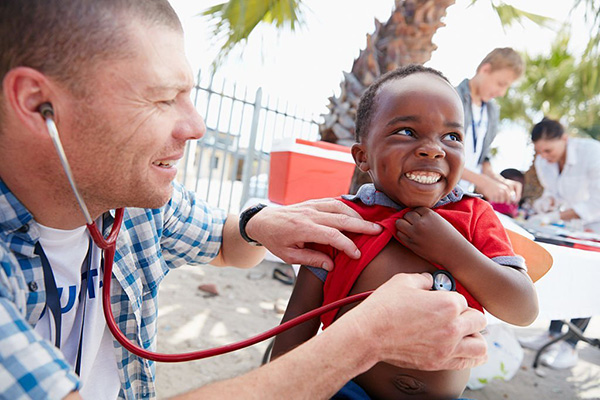
Children’s Hospital Foundation: Part of our effort in the $75 million campaign is reflecting on our foundation and reconciliation efforts and bringing to bear the reconciliation efforts of our hospital leadership, talking about this with our donors, putting an eye on this, and engaging our indigenous community.
Trying to work collaboratively with them for all of us to understand the challenges and figure out how we move forward in doing what we can do as a foundation, which is raising money to not only identify the technologies, the labs, or the new centers of excellence that are needed that primarily serve our indigenous community but are there for everyone. How do we raise money as a community together as well?
Part of our campaign has also been looking at ways of engaging our indigenous community and these discussions right from the beginning and celebrating collectively at the end when we cut those red ribbons and say, “We have a new cardiac center for kids.” It’s very inspiring to work with the indigenous community and help them help us.
It is through the Indigenous Advisory Circle that you’ve created a place for those conversations to happen. It is unique in Canadian healthcare philanthropy to have a circle like that directly embedded in the foundation. It’s a special piece. I commend you for doing it. It sounds like it’s working very well for you.
This is probably part of my urban planning background, which is if you’re going to build a community, the community needs to be at the table. As professionals, we’re all proud of everything that we’ve learned and practiced but at the end of the day, when we’re building our community, the community has to be at the table.
This Indigenous Advisory Circle was very clear in giving us thoughts in terms of what is needed. One of the things, where we saw alignment, was the needs of our physicians and indigenous community to create an indigenous healing room. It is a safe culturally inclusive space where elders, doctors and families could meet in the hospital to better understand why those kids are there and better communicate in the languages of the indigenous people that do come to our hospital, in an environment where there’s a spirituality that’s part of the design and programs.
We’re excited that in the course of a year, we raised over $600,000 to get going on the construction of a project. That is going to be a first for our children’s hospital, this indigenous healing space, driven by the indigenous community, indigenous surgeons, elders, and the community. We’re not necessarily waiting for the government to provide dollars and give us the green light saying, “This is something that we believe in. Here is the space. Go for it. If you can raise the dollars, let’s do it.” Finding a way for the community, particularly the indigenous community, to be listened to and work collaboratively right to the finish line is important to our foundation.
Finding a way for the indigenous community to be listened to and work collaboratively right to the finish line is essential to our foundation. Share on XIt is remarkable to hear you talk about that. It’s an example that lots of leaders across the country can learn from. That phrase, “If you’re going to build a community, the community has to be at the table,” people should write down and put on their monitors as they’re having conversations with people over the course of a week.
You’ve described the transition, the success of the campaign and the building of community. It sounds like a perfect LinkedIn post, a straight line from beginning to success with no bumps in between. Were there moments as a new leader in the organization who was new to the sector that you wondered, “What have I gotten myself into?”
Maybe in the first week but then you realized that you’re surrounded by great people and have built an organization with that same thinking of great people. There’s a connection for me, which I didn’t understand until my tenure here. I have three boys. I have a vested interest in this. I can tell you that all three of my boys have used the services of the hospital, some more, some less. For me, it became very personal early on.
Some of the other things that I’ve done were very personal and passionate, but it hits close to home when you have children. You can understand what families and kids are talking about when it comes to, “I wish we had this ultrasound to reduce my waiting time for my child. I wish we had this piece of equipment to reduce the pain my kid goes through every single time that blood is drawn. I wish our waiting room in the emergency department was a little bit bigger so we didn’t have to stand while we wait for three hours.” I can understand what the kids and the families are saying so that connection for me is part of the passion that drives me. It’s passion that is the most important thing. Everything else is fun work.
When you do face a challenge, whom do you go to for advice?
It’s interesting because like anything in life, I don’t have the answer to everything. When it comes to working, I have a couple of board members whom I pick up the phone and say, “I’m stuck here. What am I supposed to do?” I have some great staff as well. Part of what’s important to me is the leadership at this level has to be shared with the leadership in your organization.
I bring those problems to the leadership group and say, “Here’s the problem. What do you think we need to do?” At the end of the day, I thought I may have had the solution but it’s like, “I get it. Everyone’s lens on this has allowed some layering and this is a much better solution.” There’s buy-in so even if we got it wrong, it doesn’t matter. This is another step of us learning together. The key for me is having a couple of metrics on my board. I rely on my leadership team quite a bit to help find solutions and work together primarily.
You mentioned your team. I appreciate that approach of bringing them into the conversation, learning from them, and helping to come up with better answers. How does someone on your team earn a gold star?
Part of my thinking is that it’s all about the team winning. It’s not about the individual. At the end of the day, what I’ve always said to my team is, “We need to cross the finish line together. If I’m in the end zone all by myself and it’s for the winning touchdown and all of you are on the 60-yard line, that’s not a win.” That’s maybe a temporary win, but that’s not a long-term win. The gold star for us is our team getting to $75 million. Every single one of us plays a role in getting $75 million from our frontline staff to me and everyone in between. If there’s a gold star, it’s called the Team Win. We have this big goal of $75 million and that’s when we all get the gold start.
The gold star is your organizational North Star, “Let’s get after it.” That’s great. As we come to the end of our conversation, I’m curious, what are you looking forward to in the year ahead for the Children’s Hospital Foundation of Manitoba?
We had a meeting with our senior management team on what the next months will look like. We’re very optimistic that we’re going to complete our $75 million campaign. We’re already talking about what’s next. How do we take everything that we’ve learned, all the bumps, failures, and successes? What’s next for this foundation, which is here to serve the families, the kids and the caregivers in our province? To me, the most exciting part is celebrating our success, but still understanding that we still have a lot of work to do in this area of child health. We’ll be crossing that finish line together, and then going forward collectively as a team for the next benchmark.
Stefano, thank you for sharing your insights, wisdom, and learning over the course of our conversation and for being on the show.
Thank you so much for the opportunity.
Important Links
- Children’s Hospital Foundation of Manitoba
- Italian Cultural Center
- Folklorama
- Better Futures Campaign
About Stefano Grande
 Stefano Grande is the President and CEO of the Children’s Hospital Foundation of Manitoba. He joined the organization in fall 2018. Under his leadership, the Foundation launched a bold, five-year strategic plan, which includes a significant commitment to reconciliation, and a historic $75 million campaign to transform child health in the province.
Stefano Grande is the President and CEO of the Children’s Hospital Foundation of Manitoba. He joined the organization in fall 2018. Under his leadership, the Foundation launched a bold, five-year strategic plan, which includes a significant commitment to reconciliation, and a historic $75 million campaign to transform child health in the province.
Well known to Winnipeggers in his previous role as long-time CEO of the Downtown Winnipeg BIZ, Stefano applies his proven track record of success and passion for the community to raising funds and support for the work of HSC Children’s Hospital and Children’s Hospital Research Institute of Manitoba. Stefano’s background as an urban planner gives him a unique approach to collaboration, building strong relationships with healthcare and research leadership, donors, organizations and community members to ensure a shared vision to help sick and injured kids.
Stefano lives in Winnipeg with his wife, Grainne, and three teenaged sons.

